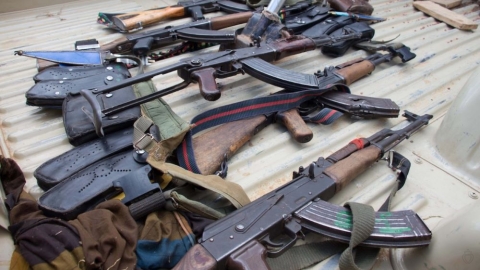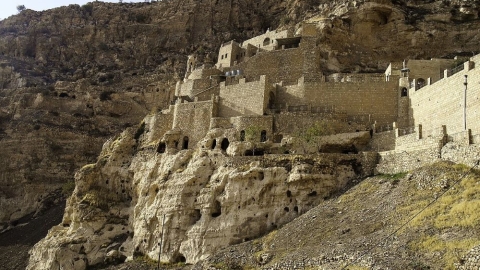The Reform of the Roman Curia is “Three Quarters Done”

The 21st meeting of the Council of Cardinals, or the C9, began on Monday, September 11, 2017, and ended on the 13th.
Instituted by Pope Francis on September 28, 2013, the C9’s mission is to implement a reform of the Apostolic Constitution “Pastor Bonus” on the organization of the Roman Curia. (Ed. Note - For the background to this effort, see: "Toward a Rapid Reform of the Roman Curia," May 17, 2013)
Marcello Semeraro, bishop of Albano (Italy), is the secretary of the Council of Cardinals. He declared to Vatican Radio that “the reform is more than three quarters done,” adding, “I think that within a few months this revision will be more or less complete, and then the Pope will have at his disposition the proposals that regard all the Dicasteries and I would expect him to decide how and when to actuate them.”
A Novel Process of Reform
Interestingly enough, it would seem that the project of reforming the Curia did not begin with the Holy Father himself. According to what Bishop Semeraro told the journalist Alessandro Gisotti, “if the Pope began this work of reforming the Curia, it was in answer to the suggestions that came up mostly during the meetings that preceded the conclave.” Which clearly implies that the congregations of cardinals held during the last conclave wrote up a sort of “roadmap” for the future pontificate.
The Council of Cardinals, explained Bishop Semeraro, is “an organism that is situated within the context of episcopal collegiality.” It would thus seem that the reform of the Curia is inspired by the movement of decentralization and joint exercise of authority begun with Vatican Council II. When we consider the devastating effects caused by collegiality in the local Churches, we cannot but dread seeing the Roman authority weakened by this Curial reform, at the expense of Faith and morals. And unfortunately, the current sovereign pontiff seems to wholeheartedly agree with this.
The upcoming reform of the Curia is expected to place particular emphasis on communication: the brand-new “Secretariat for Communications also has an enormous administrative responsibility because of its dimension,” revealed the bishop of Albano, adding that “because of the importance of the theme of communication, it is a central dicastery in the project of the Curial reform.”
A Reflective Pause in the Process
To give a more precise idea of what happened at this twenty-first meeting, Greg Burke, director of the Holy See Press Office, declared that the work of the C9 marked a “reflective pause” in the process of reforming the Curia.
They reflected upon “the texts of the pope” regarding the reform, in particular his speech to the Curia in December of 2016, his speeches to the consistories in November of 2016 and June of 2017, and the speech Francis gave on October 17, 2015, for the 50th anniversary of the Synod of Bishops.
Based on these texts, the statement from the Holy See Press Office explained that the Cardinals worked on the Curia as
...an instrument of evangelization at the service of the pope and the local Churches. In particular the cardinals talked about the need for decentralization, the role of the nunciatures, the selection of personnel, especially the need for a less clerical and more international staff, with an increase in the number of women and young people.
More Liturgical Problems on the Horizon
Of course the recent papal document Magnum Principium on the increased power of the national Bishops’ Conferences regarding liturgical translations came up, and Nicolas Senèze, in the newspaper La Croix, mentions that the C9 reflected upon the “consequences” of this document “on the competence of the Congregation for the Divine Cult and the Discipline of the Sacraments.” Cardinal Robert Sarah, prefect of this dicastery, who is not a member of the C9, can expect to see his field of competence fade to nothing in the near future.
The next meeting of the C9 is scheduled for the month of December. It, too, will enter into the program Pope Francis has been following since his election, and that he made explicit in his address to the Curia on December 22, 2016: “to reform what’s deformed, then to conform what’s been reformed, next to confirm what’s been reformed, and finally to transform what’s been confirmed.”
And what is at risk ? Will this dilute even further the magisterial power in the Church? Only the future will tell.
(Sources : Radio Vatican/La Croix ‘urbi & orbi’/press.vatican.va - FSSPX.Actualités - 29/09/17)





